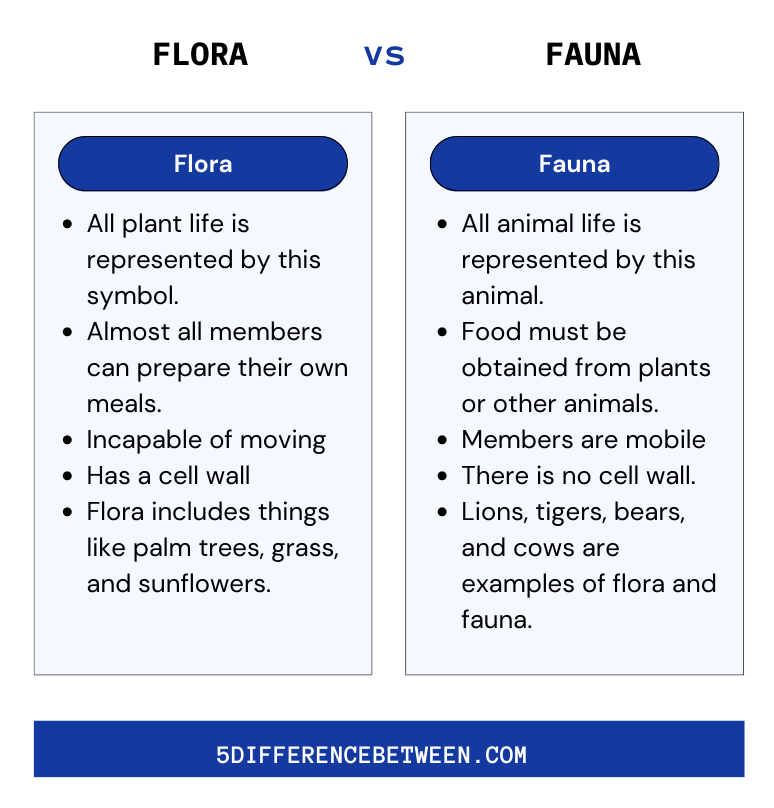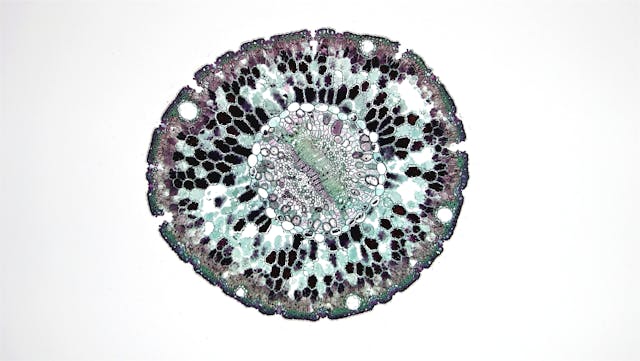The terms flora and fauna are frequently used interchangeably when discussing the natural world. Flora denotes plant life in a specific region or habitat, whereas fauna denotes animal life in the same region or habitat. Differences between flora and fauna are not interchangeable, despite the fact that they both refer to the same region or habitat. This article will look at the differences between flora and fauna.
Why is It Called Flora and Fauna?
Both are used to describe the plant and animal life in a particular region. They are derived from Latin and were first used in the 18th century by Carl Linnaeus, the father of modern taxonomy. The term “flora” refers to all the plants in a given area, while “fauna” is used for the animals.
Also Read > Difference Between Animal and Plant Cell
The terms were chosen by Linnaeus because they represent two of the three goddesses of Roman mythology. Flora was the goddess of flowers, while Fauna was the goddess of animals. He believed that by using these names, people would be able to better understand and appreciate the natural world.
In addition to being descriptive terms, the words “flora” and “fauna” are also used to refer to the scientific study of plant and animal life. This involves the identification, classification, and distribution of plants and animals. Scientists use this information to gain insight into the natural history of a region, as well as the relationship between different species.
Diversity of Habitat
They are also used to describe the diversity of a particular habitat. For example, a tropical rainforest is said to have a high diversity of flora and fauna, while a desert is said to have a low diversity. This is because different habitats can support different types of plants and animals.
The terms “flora” and “fauna” are also used to refer to the conservation of plant and animal life. Conservationists work to protect and preserve threatened species, as well as their habitats. This helps ensure that future generations can enjoy the same natural beauty that we do now.
In summary, the terms “flora” and “fauna” were chosen by Carl Linnaeus to refer to the plant and animal life of a region. The words are also used to refer to the scientific study of plant and animal life, as well as the diversity of a particular habitat. Finally, they are used to refer to the conservation of plant and animal life.
Example of Fauna
Fauna is a term used to refer to the animals that live in a particular region or habitat. It includes all the animals that have adapted to their environment and have survived for generations. Examples of fauna include mammals such as bears, deer, and wolves; birds such as owls, hawks, and eagles; reptiles such as snakes and lizards; amphibians such as frogs and salamanders; and fish such as trout and salmon. Fauna is a vital part of the environment and its continued survival is essential to the health of the ecosystem. Fauna helps to maintain the balance of the environment by providing food, controlling pests, and providing a source of income for people who live near the habitat. Without fauna, the environment would be unable to survive.
Example of Flora
Flora is a term used to describe the plant life of a certain region or environment. It includes a wide variety of species, such as trees, shrubs, grasses, ferns, vines, and flowers. Some areas have a unique flora that can only be found in that particular region, such as the cactus of the Sonoran Desert. Flora is important for providing food, shelter, and oxygen for many animals, and it also affects climate, soil, and water quality. Flora can also be studied to understand the history of an area, since different types of plants can indicate different environmental conditions. Flora can be incredibly diverse and complex, providing a basis for a variety of scientific studies and research.
Flora Vs Fauna

Flora and fauna are important elements of our environment. They provide us with numerous advantages, such as food, medicines, and materials for clothing and shelter. They also help to keep our air and water clean, as well as provide essential natural resources. We must work hard to protect our flora and fauna so that we can continue to benefit from them.






